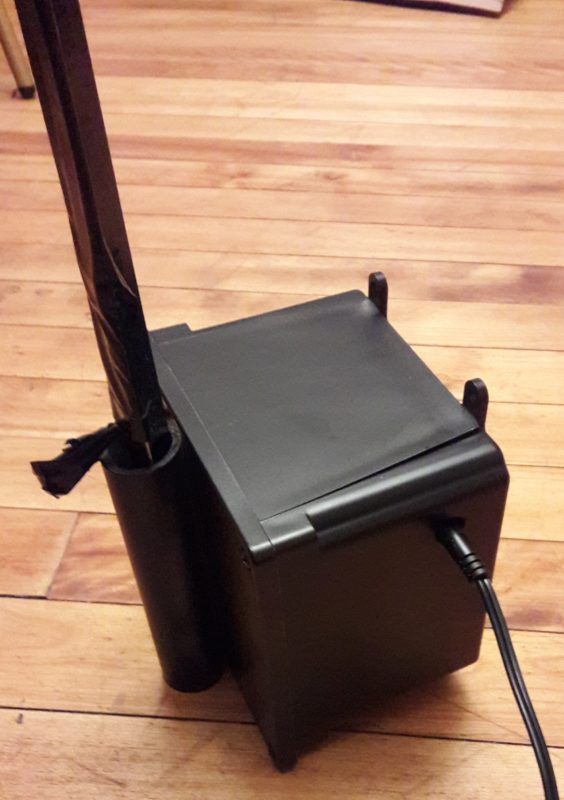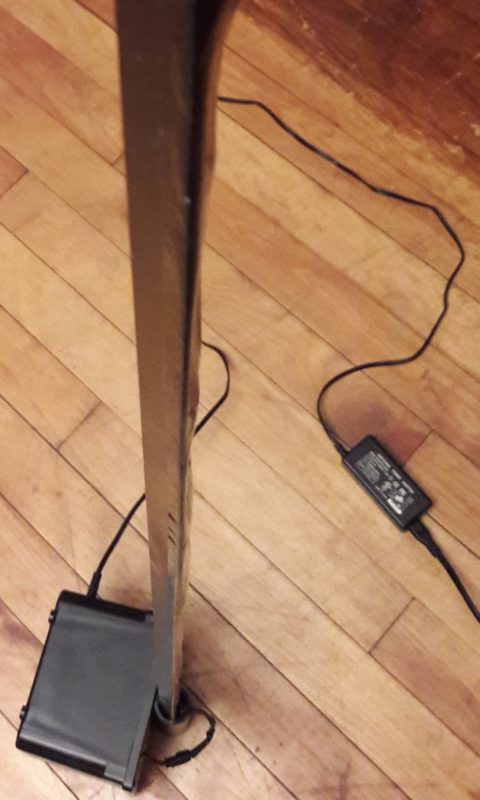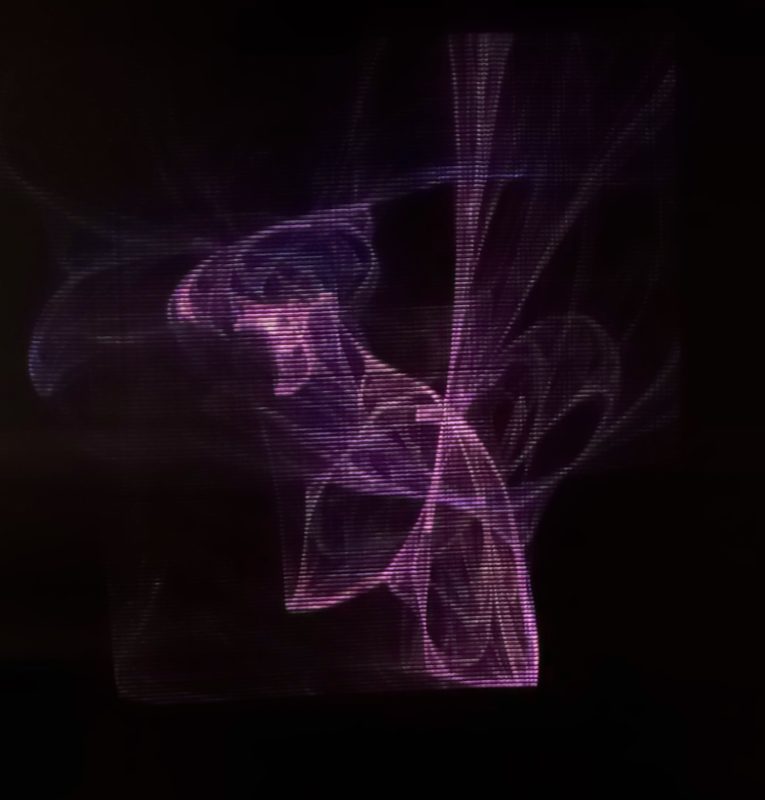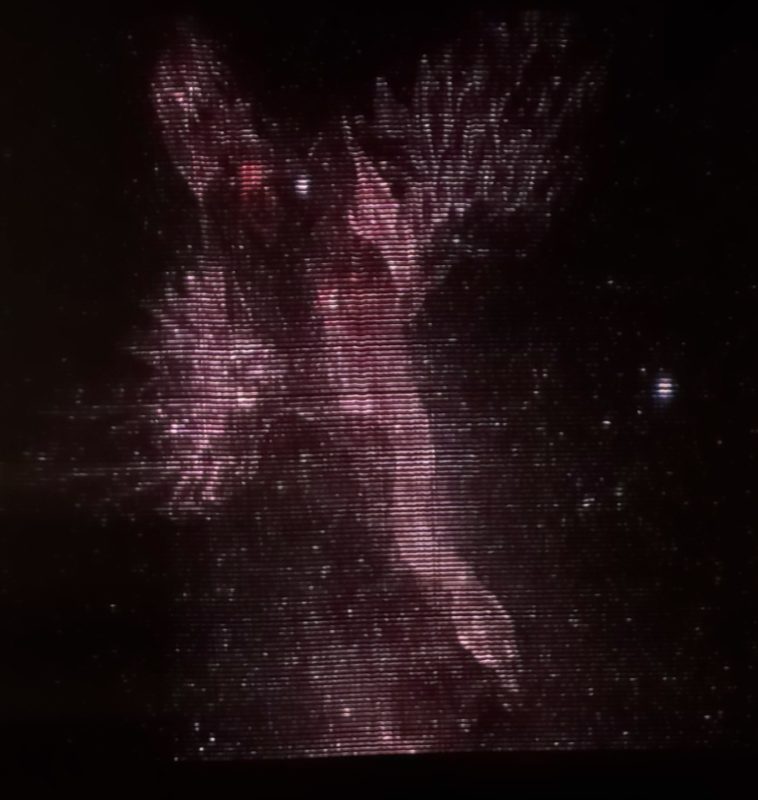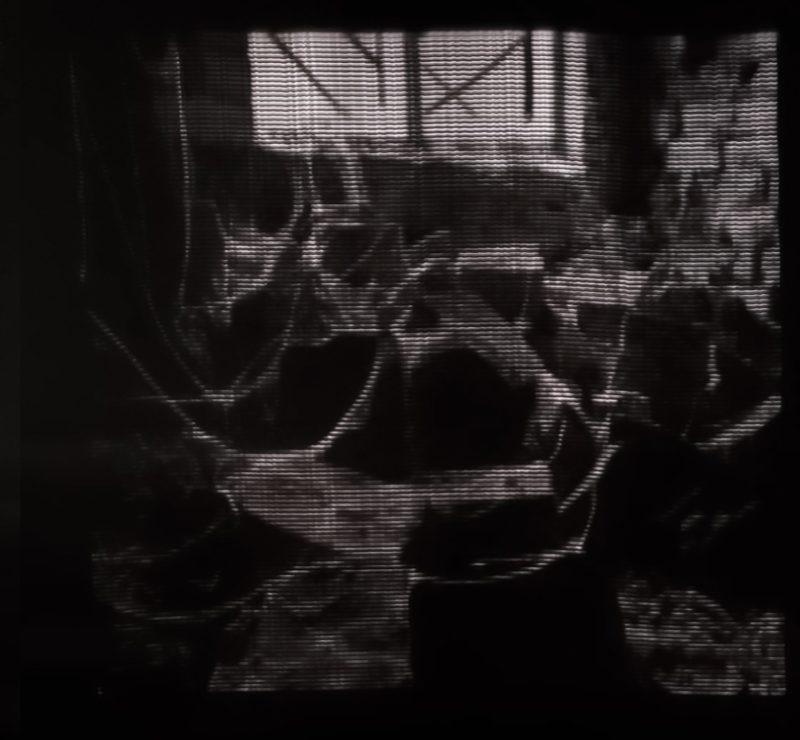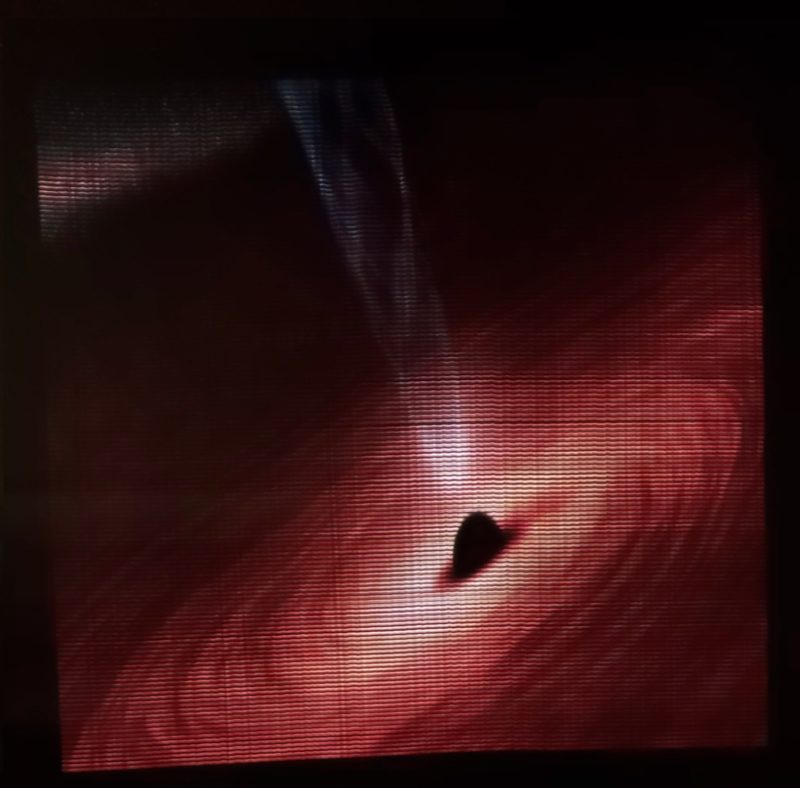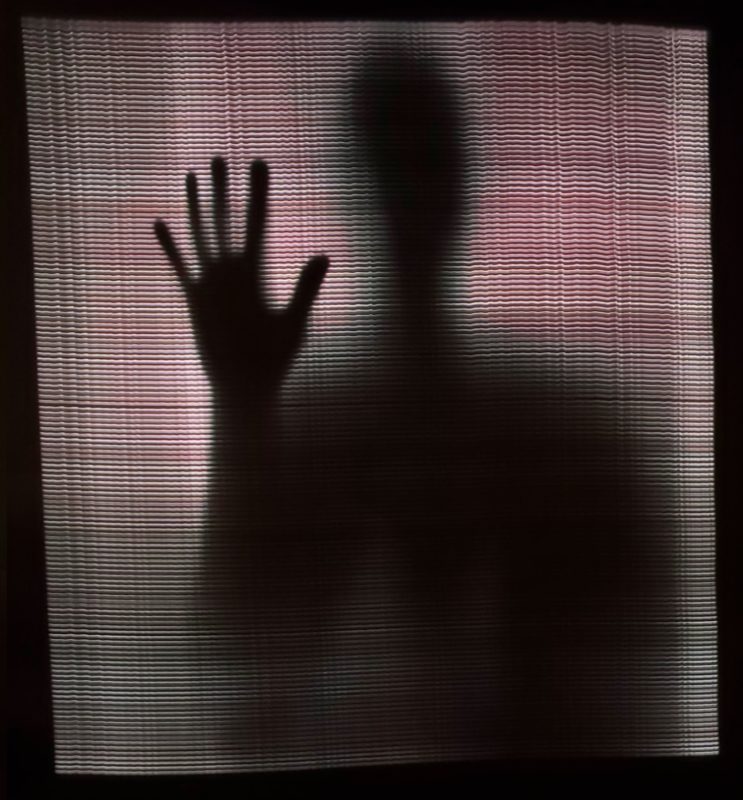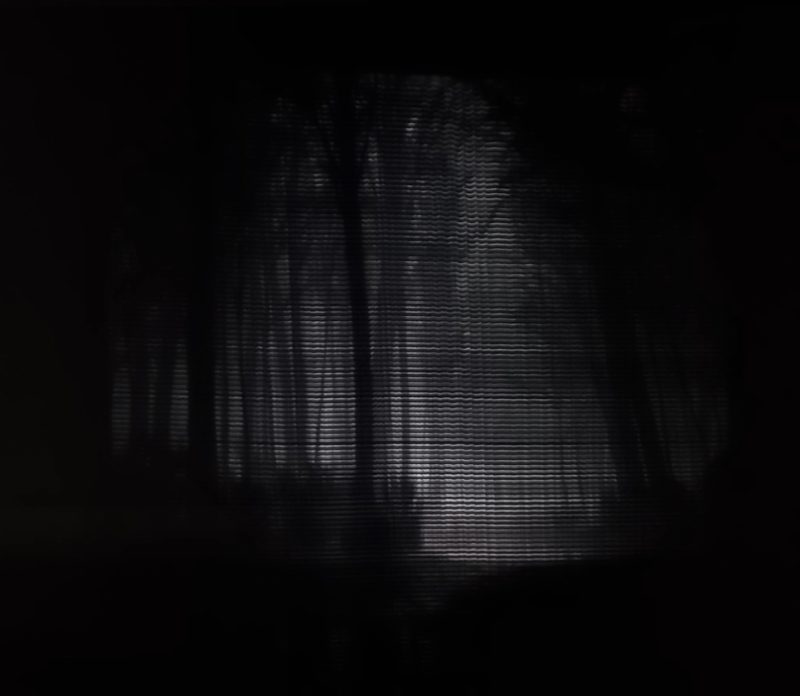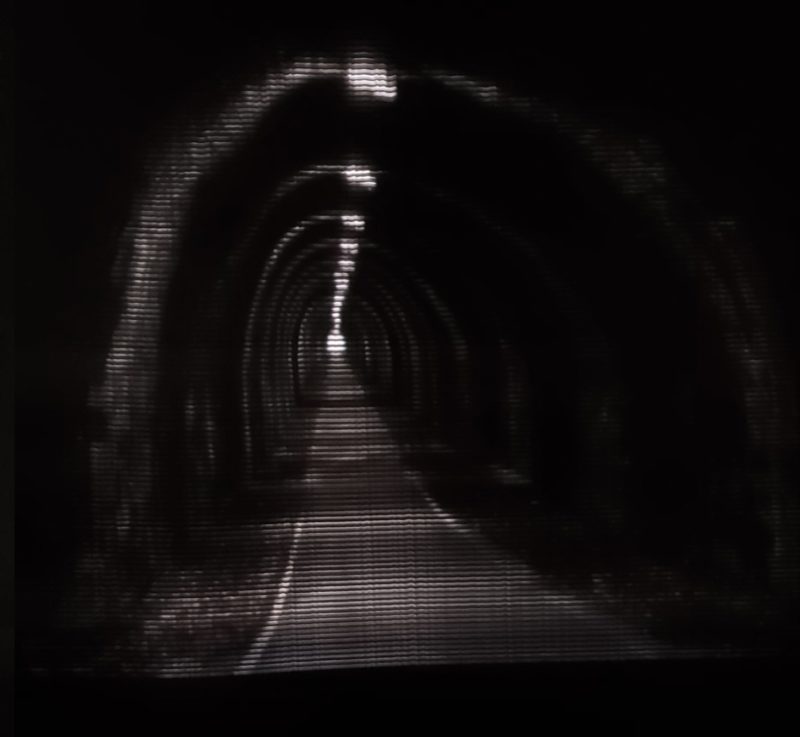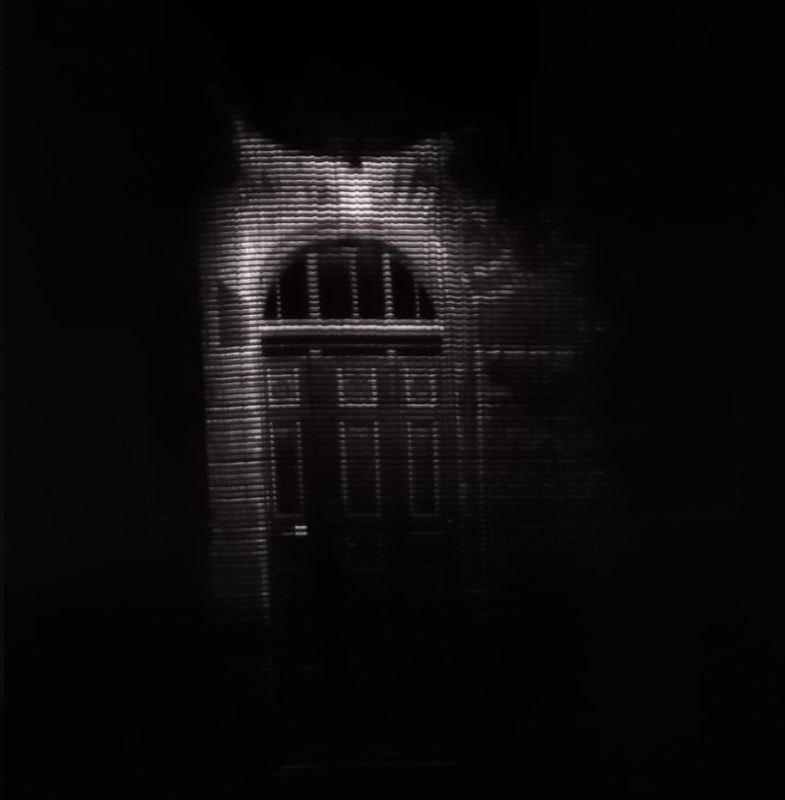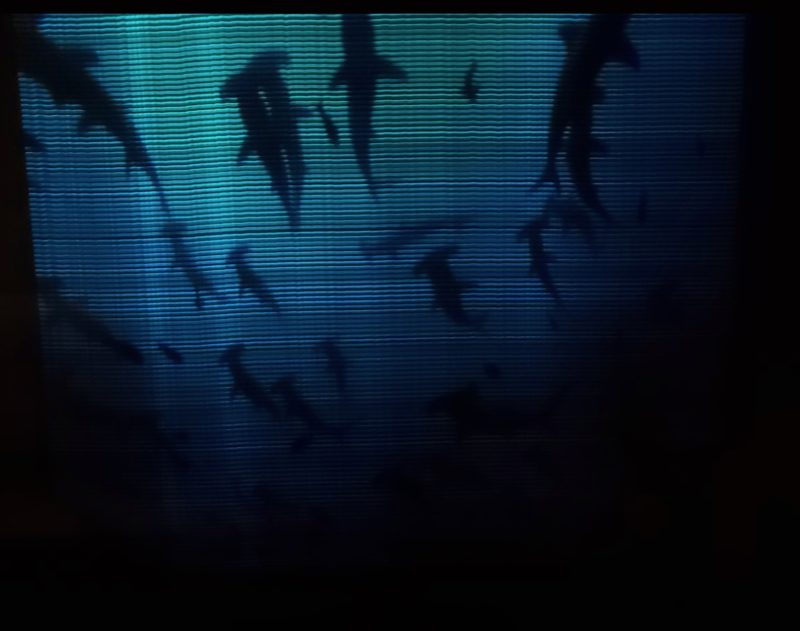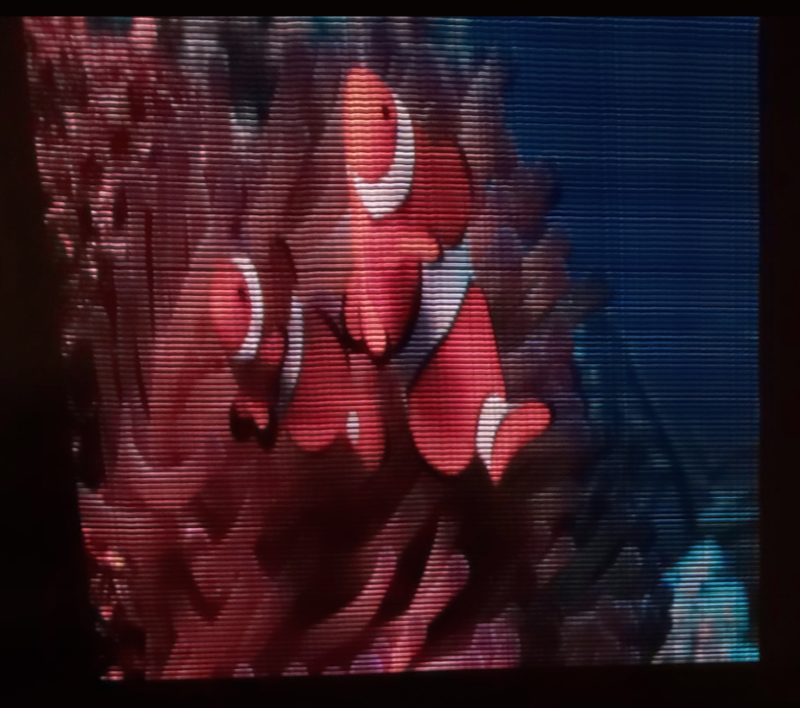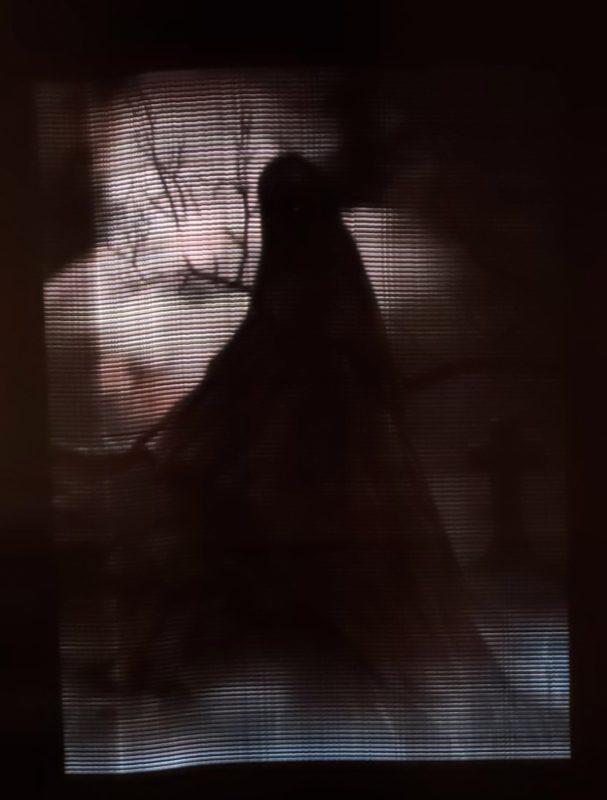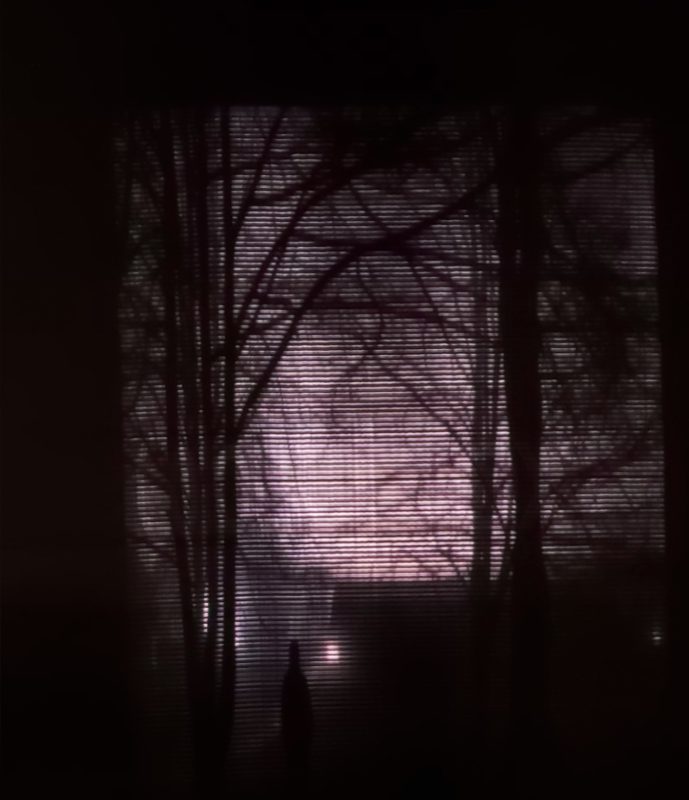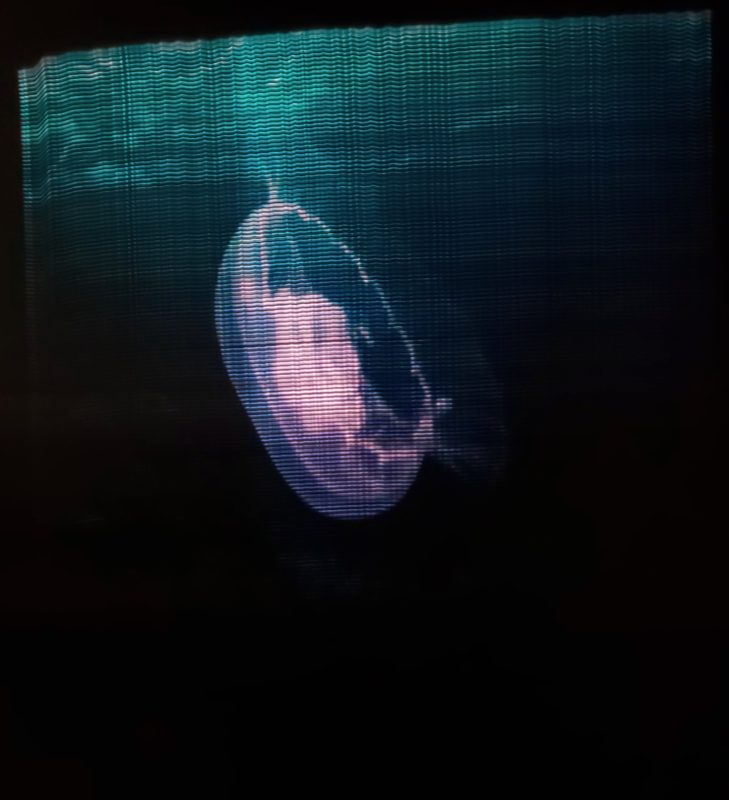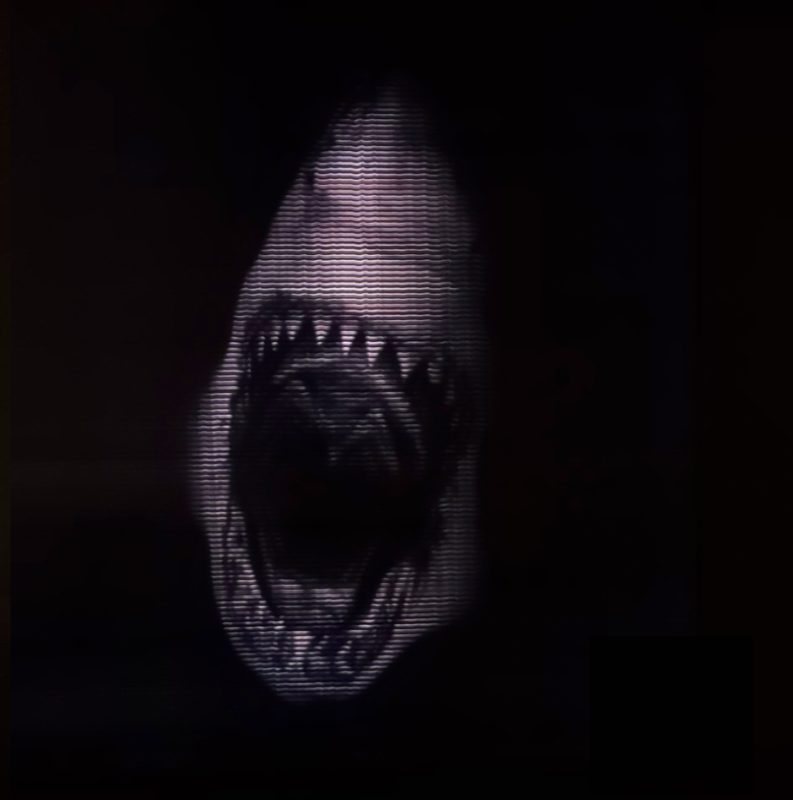Since I had the system working and all my images chosen at the Everything Working assignment, this week was about refinement. I spent part of this week repainting scuff marks on the box holding the electronics, and covered up the one exposed wire (which unfortunately must be there to enable reasonable transport) with black tape to minimize its distraction. The finished box is shown below, painted and resting on the floor.
For the display of the project on the last class, my piece will work fine being set on a table. It has a stable base and was designed to be able to sit on tables for temporary displays without sacrificing quality of the final image. For more permanent displays however, my piece has screw holes that would let it be mounted to a wall that ensures better image quality and more precise alignment of the strip to the vertical for perfect images. The ultimate location for this would be along a moving walkway, where people would be able to stand still and move past the piece at a constant rate easily. The exact timing of images being displayed would be altered to match the walkways speed as close as possible.
The other work this week was on imaging the project correctly. This project relies heavily on long exposures and steady motion to get great results. The challenge is ensuring that for final documentation of the project, that this can be easily repeated to get images of the final project. To get smooth motion during the exposure, I used a cart from my kitchen that I pushed past the project. This approach worked well and produced warp-free images. The other part of the week was spent adjusting the camera settings to get the best exposure. I found that a 120 ISO, 10s exposure, 1.6F, manually focused image came out the best in low light situations. For areas with more light, adjusting the ISO down further to about 80 cuts down on the impact of the external lighting. When set correctly, the background of the piece doesn’t matter much as long as there are no direct light sources in it. Since the camera is moving, most features, if present, are blurred and become splotches in the background without really affecting image quality.

Here is a set of the images I have captured so far using the cart technique with the aforementioned camera settings. It seems to produce images of sufficient quality with minimal warp. These images had no alterations made except for having the rest of the black background cropped out.

